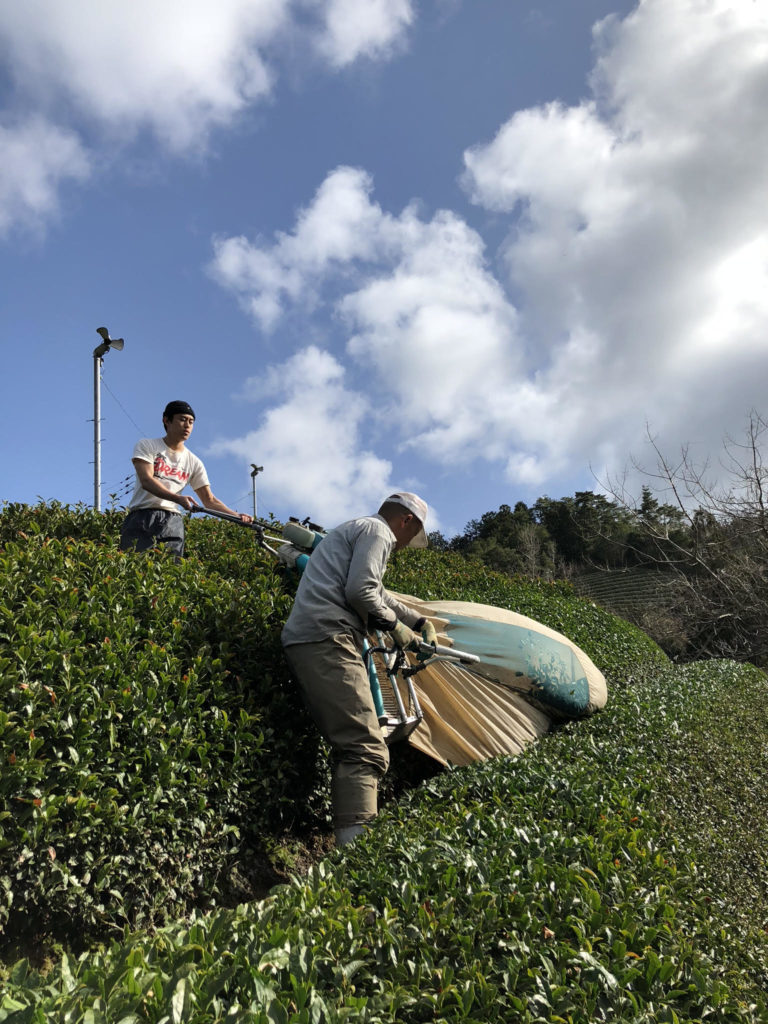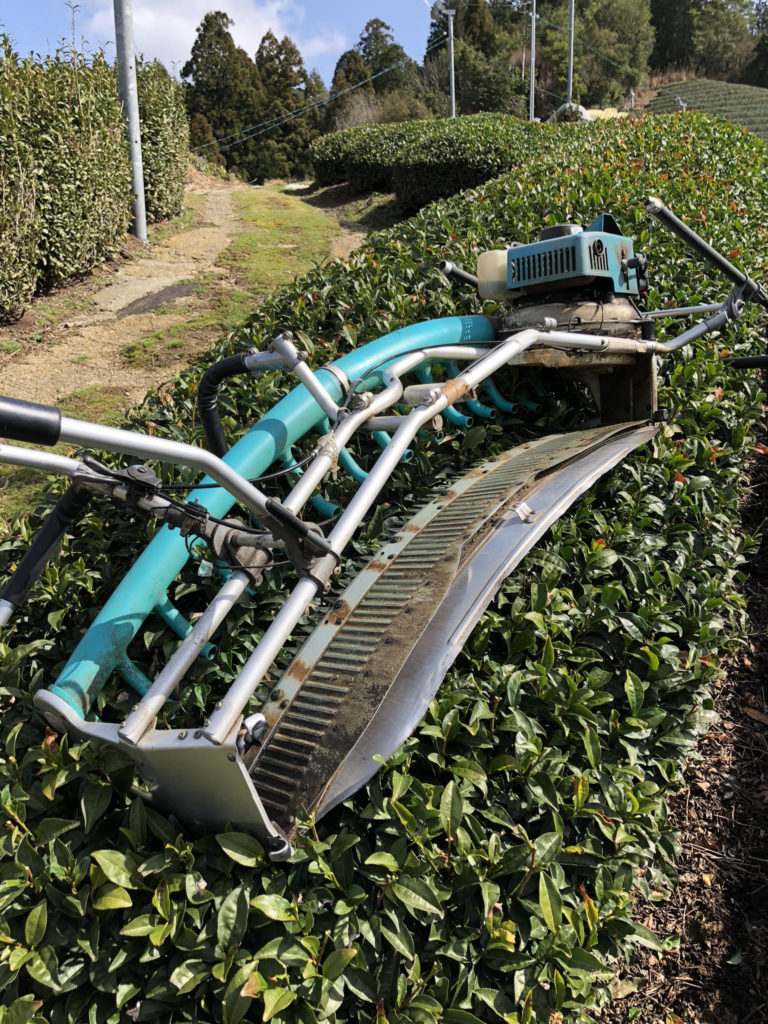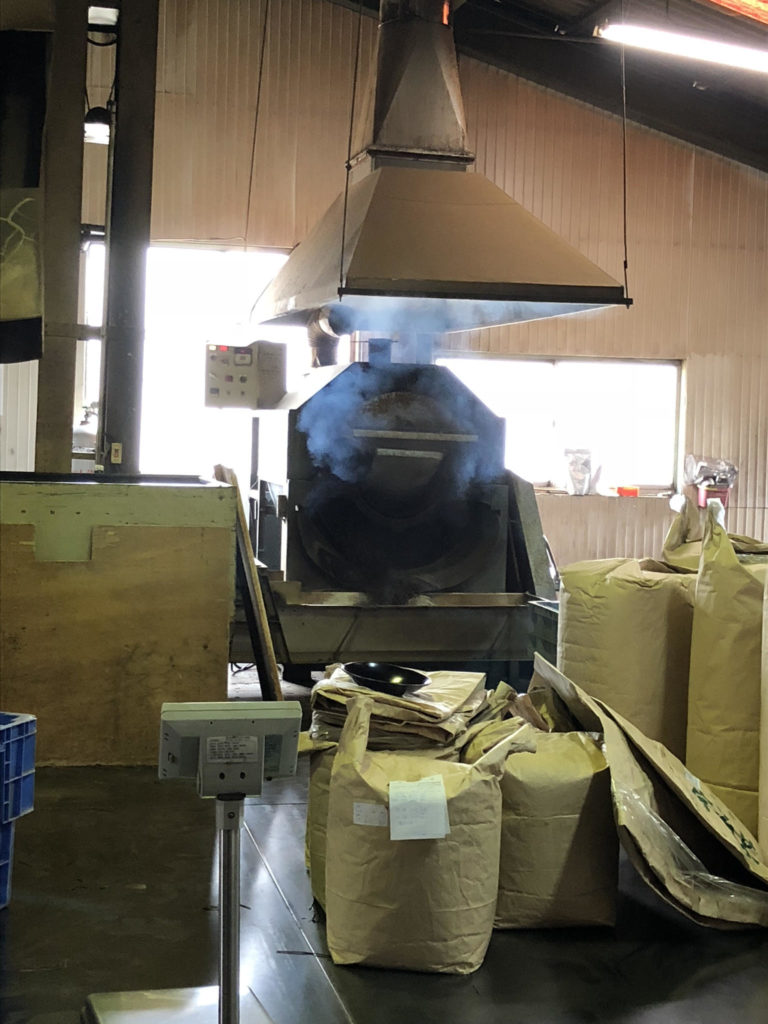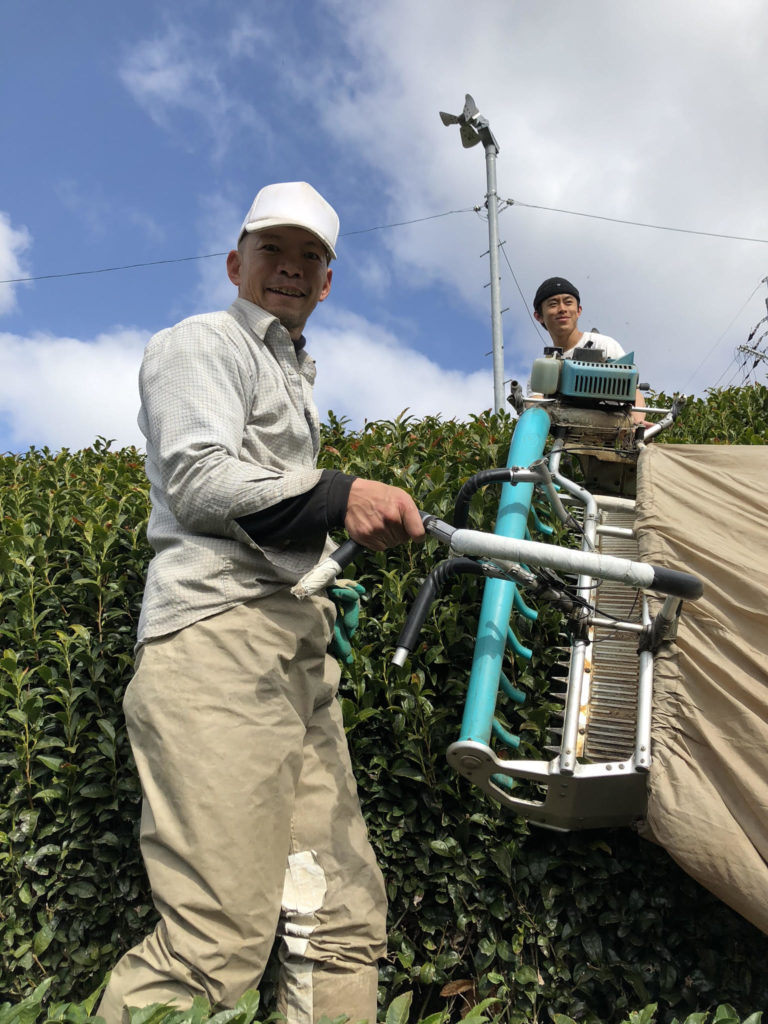Teas Provided by Kyoto Obubu Tea Farms

Kyobancha is a green tea that is unique to the Kyoto region. I was fortunate enough to experience this tea from farm to cup, and I wanted to share it!
Kyobancha is a large leaf green tea that has been roasted. The leaves are large because it is made from the leaves that survived during the winter after the Autumn Harvest in November. (Left: Kyobancha | Right: Kyobancha Material (dried))
Since the winters are cold in the Kyoto Region, the growth is reduced. In March, the leaves are harvested in preparation for the Spring Harvest. This is to ensure that the large leaves are not mixed in with the new tender shoots of spring.
At this stage, the leaves can be put back into the ground and used as fertilizer or made into a new tea: Kyobancha. When it is made in Kyoto, it is called Kyobancha but when it is made in other areas it is called iribancha.
The ‘bancha’ part of the name signals that it is a lower grade tea, which is normally harvested after the Sencha or Tencha (used to make Matcha). Kyobancha can be called a bancha because it is harvested after the Sencha or Tencha from the Autumn Harvest the previous year.
Farming & Processing

I went farming with Akky-san (Obubu President) and David (a fellow intern). We started at 8 am and we drove to the field. The weather was beautiful!
In Japan, 99% of all tea is actually machine harvested, which is part of why all the tea plants are in long rows. Here at Obubu, we use a machine called a tekisaiki (摘採機). It is held by two people on either side of the row.

The machine has blades that cut the leaves which are blown into a big bag. The netted bag is connected to the machine. The users walk along the row in sync to cut the plant. The closest machine in comparison would be a lawnmower.
When harvesting, one must take special care to not cut the “mother” part of the plant. This part of the plant is not cut and used for harvesting. Only the new shoots are harvested for tea.
Narashiki (均し機) is the trimming machine which is used to keep the tea plants in an orderly fashion. It works in a very similar manner to the tekisaiki.

I trimmed a few rows with Akky-san on the other side. I am pretty small in stature, so I found the machine to be a bit heavy. Akky-san was very patient and would tell me to move the tekisaiki higher or lower and did most of the leading.
The bags are netted to allow them to expand. While carrying the bags, I could hear the leaves swishing around. All of us carried the bags to the truck and then they were off to the factory!

The leaves are brought to a local factory where they are steamed for an hour and then dried for one hour. The drying takes longer because the leaves are so large. Then the leaves are roasted for 10 to 15 minutes. The roasting is done using fire with the tea in a barrel. This is a shorter process than what is required for something like a hojicha, for example, because the leaves are wider and dry more easily.
Aroma & Taste

Notes: Since I already like the roasted notes of hojicha, I admittedly am also a fan of kyobancha. It is a pretty bulky and light tea so I filled a full 300 ml kyusu with loose leaf.
While the dry leaves had a faint roasted flavour, it came forward after adding the hot water. I let it sit for around a minute and a half because I figured that it would need some time to steep.
The liquor came out as a light amber colour with reddish undertones. It had a lovely toasted aroma that was sweet and warm. I enjoy roasted teas as I find the taste and smell very comforting.
I wanted to test the tea out some more, so I let the leaves steep longer. I waited around five minutes. The liquor was more of a reddish brown and the toasted notes were stronger. There was some mild astringency near the tail end of the sip.
- Type: Green tea
- Origin: Japan
- Caffeine: Unknown
- Ingredients: Roasted green tea
- Company: Kyoto Obubu Tea Farms
Final Thoughts
Since this was the first tea I saw from farm to cup, it has a special place in my heart. Overall, I enjoy roasted and nutty teas, so this one fell right into that category! Being able to drink the tea I helped harvest felt like a lovely accomplishment!
Would you also like to see a post about first harvest sencha?
Bonus Photo


3 comments
[…] in Spoons | 2018 Trip & Tea 101: Kyobancha – Another fabulous post from Connie during her internship in Japan! She introduces Kyobancha […]
[…] experience as well. Additionally, I was able to take part in other tea-related activities, such as harvesting and visiting factories, hand-rolling and handpicking, and pan-frying […]
[…] that Obubu Tea is my favourite tea place in Japan. While I was there, I was able to learn about tea farming, production, culture, and so forth. I even had the opportunity to help run tea tours, pick and […]